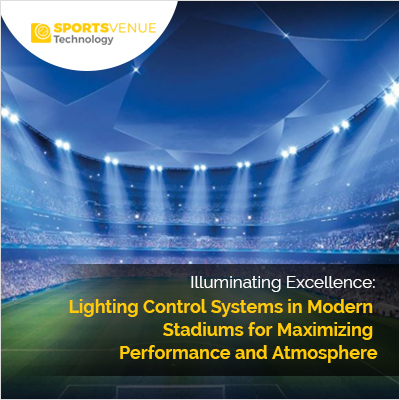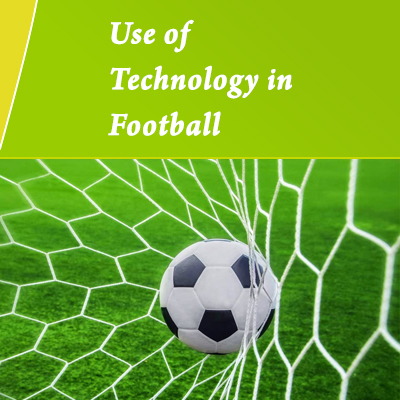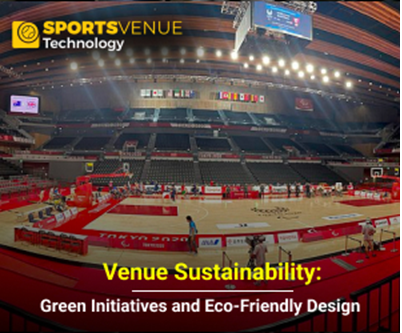Illuminating Excellence: Lighting Control Systems in Modern Stadiums for Maximizing Performance and Atmosphere

Introduction:
In the contemporary landscape of sports venues, the importance of lighting transcends its traditional role of providing mere visibility. Lighting control systems have evolved into indispensable elements, not only guaranteeing optimal visibility for both players and spectators but also playing a pivotal role in crafting a dynamic and immersive atmosphere. This article delves into the progressive journey of lighting control systems in modern stadiums, with a specific focus on their role in optimizing performance and enriching the overall ambiance of the sporting experience.
1. The Evolution of Stadium Lighting:
The progression of stadium lighting has been a captivating voyage, characterized by noteworthy technological strides. The conventional use of floodlights, which was once fundamental for sports illumination, has progressively yielded to energy-efficient LED systems. This shift has not only transformed the standards of lighting quality but has also left a profound imprint on the economic and environmental facets of stadium management. LED systems provide heightened brightness, improved color rendition, and enhanced controllability, ultimately contributing to better visibility for both players and spectators. Notably, the transition to LED has significantly diminished energy.
2. Precision Illumination for Performance Enhancement:
Precision illumination is at the forefront of enhancing player performance in modern stadiums. Advanced lighting control systems now allow for tailor-made lighting configurations optimized for different sports. Uniform lighting across the entire playing field minimizes shadows, ensuring optimal visibility for athletes. This emphasis on precision not only elevates the overall quality of play but also significantly contributes to reducing the risk of injuries. The integration of cutting-edge lighting technologies has become a critical factor in setting new standards for excellence in sports.
| Also Read: How Does Stadium Lighting Revolutionize the Sports Industry? |
3. Dynamic Lighting for Atmosphere Enhancement:
Dynamic lighting has emerged as a game-changer in creating an immersive and captivating atmosphere during sporting events. Lighting control systems can be programmed to synchronize with team colors, music beats, and crowd reactions, transforming the stadium into a visually dynamic spectacle. This not only engages the audience on a deeper level but also adds a layer of excitement and energy to the overall fan experience. The dynamic interplay of light and sound has become an integral part of the modern sports entertainment landscape.
4. Adaptive Lighting for Multifunctional Venues:
Modern stadiums are often multifunctional, hosting a variety of events beyond traditional sports matches. Challenges arise when adapting the venue for concerts, entertainment shows, or other non-sporting events. Adaptive lighting control systems address these challenges seamlessly by adjusting to the specific requirements of each event. This versatility ensures that the stadium remains energy-efficient while providing optimal lighting conditions, demonstrating a harmonious balance between functionality and adaptability.
5. Smart Controls and Automation:
The integration of smart controls and automation has ushered in a new era of efficiency in stadium lighting. Sensors, IoT devices, and data analytics work in unison to facilitate real-time adjustments based on various factors such as crowd density, weather conditions, or specific game moments. This not only optimizes energy consumption but also ensures a seamless and dynamic lighting experience. The integration of technology and lighting control has transformed stadium management, enhancing operational efficiency and overall spectator satisfaction.
6. Sustainability in Lighting:
Sustainability has become a cornerstone of modern stadium lighting solutions. Energy-efficient LED technology stands out as a significant contributor to eco-friendly practices, reducing carbon footprints and operational costs. Additionally, there is a growing exploration of solar-powered lighting solutions, aligning sports venues with broader environmental goals. The commitment to sustainable lighting not only reflects a sense of responsibility but also positions sports facilities as leaders in green initiatives within the community.
7. Future Trends and Innovations:
Looking forward, the future of stadium lighting holds exciting possibilities. Emerging trends indicate a shift towards more immersive experiences through augmented reality integration and holographic displays. These innovations promise to further elevate the overall spectator experience, blurring the lines between the physical and virtual aspects of sports entertainment. As technology continues to advance, stadiums may become interactive, engaging fans in novel and unprecedented ways, shaping the future landscape of sports venue illumination.
Conclusion:
In conclusion, the infusion of cutting-edge lighting control systems has emerged as a pivotal force in the ongoing modernization of sports venues. Far beyond the basic function of providing illumination, these systems have become integral architects of the overall experience within these dynamic arenas. The evolution of stadium lighting is emblematic of the relentless pursuit of excellence in sports entertainment, with each technological stride contributing to a multi-faceted enhancement of the sporting landscape.
Enhancing player performance stands out as a primary testament to the transformative impact of advanced lighting control. From the precision illumination tailored to different sports, minimizing shadows, to ensuring optimal visibility, athletes now compete in an environment optimized for their best performance. This not only raises the bar for athletic achievement but also underscores the commitment of sports venues to providing optimal conditions for competition.





